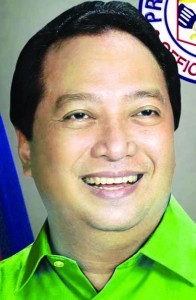
The subject matter on creating one more congressional district in Bohol, making it four in all, cropped up again upon reports on the increase of the population in the province.
Governor Edgar Chatto expressed during last Friday’s round of the weekly forum, “Kita ug ang Gobernador†that he favors the creation of an additional district in Bohol which would mean one more congressman to represent Bohol in Congress who will also funnel additional national assistance for projects and programs that will benefit the Boholanos.
Chatto said he indeed supported the idea when raised during the time of the late second district congressman and former governor, Erico Aumentado.
Chatto, however, explained that Boholanos should wait for the proper timing for it.
The matter can best be attended to after the elections next year.
The 2010 census shows that Bohol already has a population of 1.2 million and ongoing National Census of Population tends to indicate an increase.
The idea of creating the fourth district for Bohol cropped up in 2008.
It was even projected then that by 2010, Bohol would have the fourth slot in the House of Representatives, as projected that time by Lawyer Cristifil Baluma, former Integrated Bar of the Philippines (IBP)-Bohol chapter president.
“The cooperation of many government agencies is necessary,†as Baluma sized up the situation then.
The first district includes the capital city, Tagbilaran, and the municipalities of Alburquerque, Antequera, Baclayon, Balilihan, Calape, Catigbian, Corella, Cortes, Dauis, Loon, Maribojoc, Panglao, Sikatuna and Tubigon.
Comprising the second district are the municipalities of Clarin, Inabanga, Sagbayan, Buenavista, Jetafe, Dagohoy, Danao, San Miguel, Trinidad, Talibon, Ubay, Bien Unido, San Isidro, and President Carlos P. Garcia.
The third district covers the municipalities of Alicia, Anda, Bilar, Batuan, Carmen, Dimiao, Lila, Loay, Loboc, Mabini, Sevilla, Valencia, Garcia-Hernandez, Jagna, Duero, Guindulman, Candijay, Sierra Bullones and Pilar.
In the present set up, the town of San Isidro which belongs the second district is surrounded by towns belonging to the first district.
The late Aumentado had even moved upon his return to Congress to transfer San Isidro to the first district since it is an isolated second-district town in the contiguous boundaries of first district towns.
As basis for the creation of the fourth district of Bohol, Baluma cited paragraph 3 of Section 5 of Article VI of the 1987 Constitution that provides that “Each legislative District shall comprise, as far as practicable, contiguous, compact and adjacent territory. Each city with a population of at least 250,000 or each province, shall have at least one representative.â€
Baluma further cited that “the subsequent paragraph of the said section it reads ‘Within three years following the return of every census, the Congress shall make a reapportionment of legislative districts based on the standards provided in this section’â€.
The former IBP-Bohol president further cited Section 3 of the ordinance apportioning the seats of the House of Representatives of the Congress of the Philippines to the different legislative districts in provinces and cities and the Metropolitan Manila area which reads “Any province that may be hereafter be created, or any city whose population may hereafter increase to more than 250,000 shall be entitled in the immediately following election to at least one member or such number of members as it may be entitled to on the basis of the number of its inhabitants and according to the standards set forth in paragraph (3), Section 5 of Article VI of the Constitution. The number of Members apportioned to the province out of which such new province was created or where the city, whose population has so increased, is geographically located shall be correspondingly adjusted by the Commission on Elections but such adjustment shall not be made within one hundred and twenty days before the election.â€
However, Baluma hinted that it would depend on the leanings  of governance of the next national administration, and as long as the present Constitution stands.
